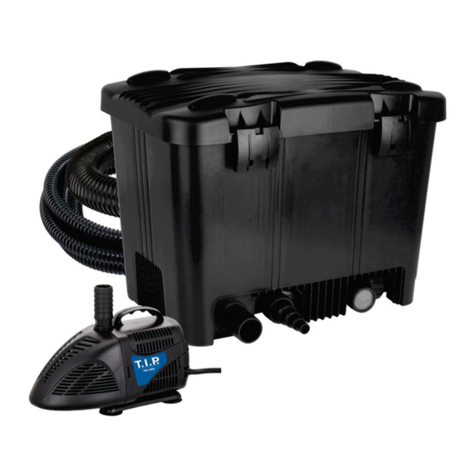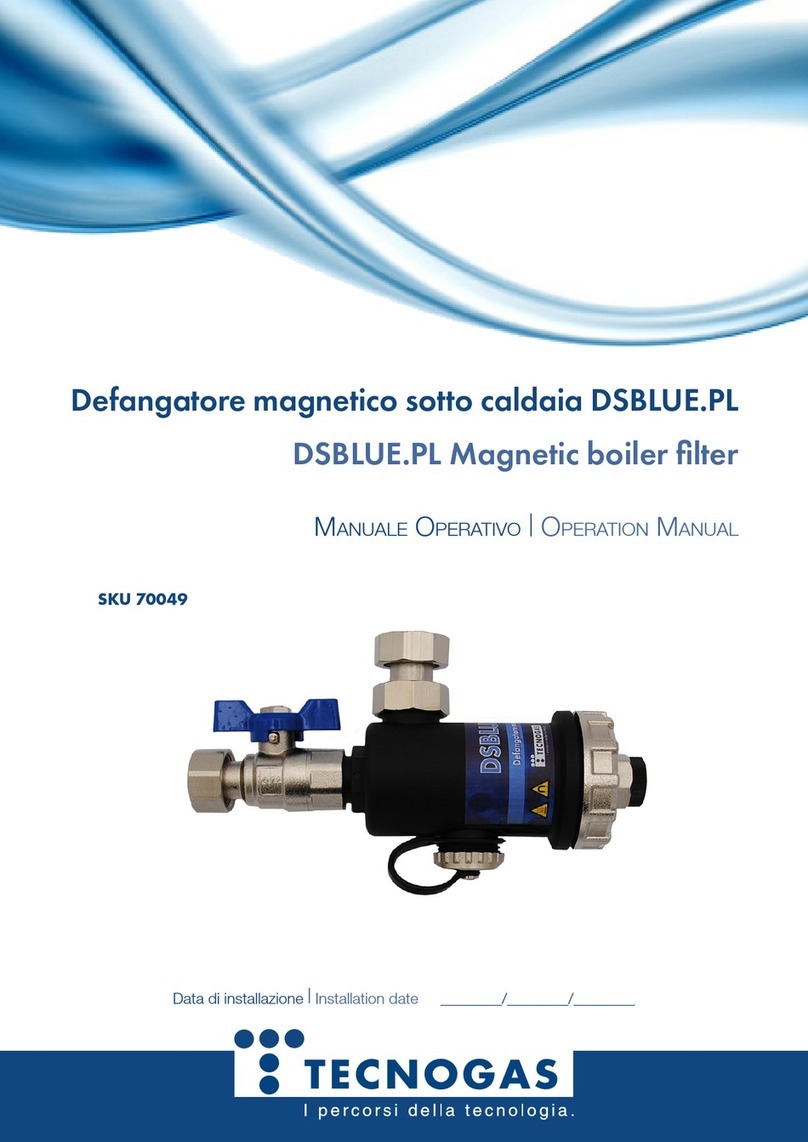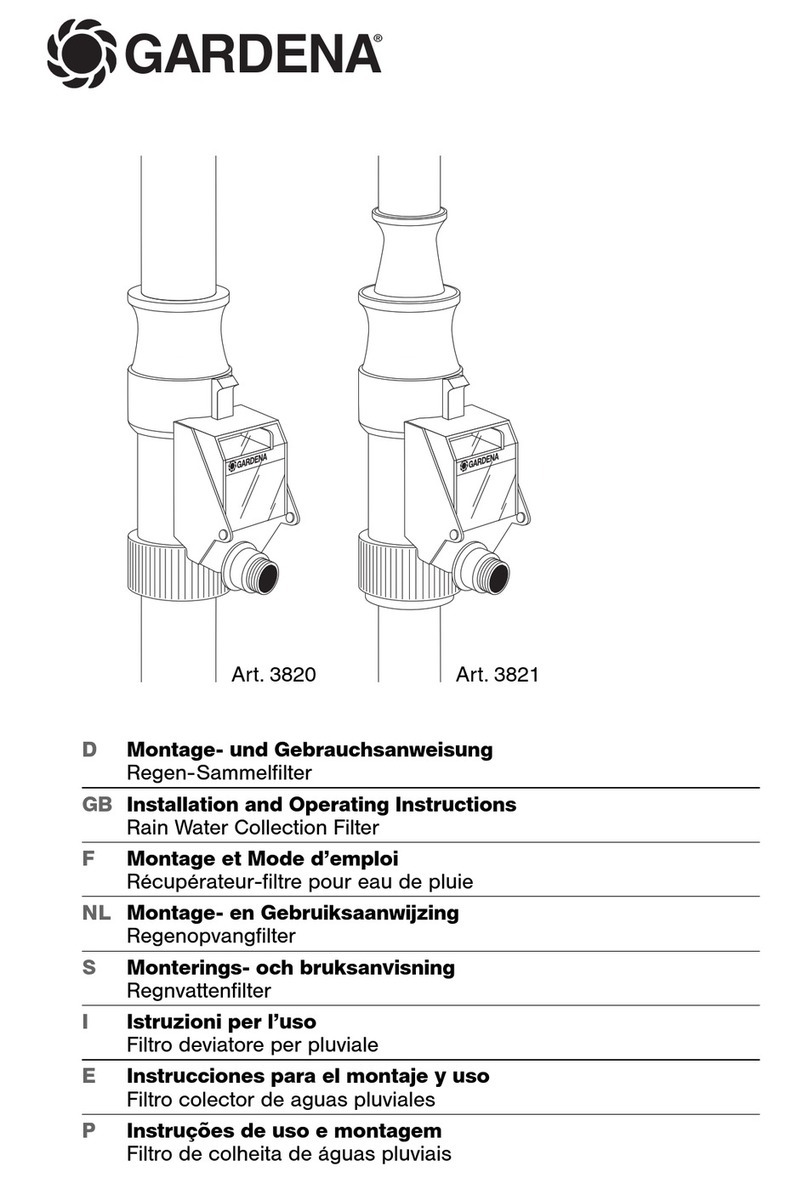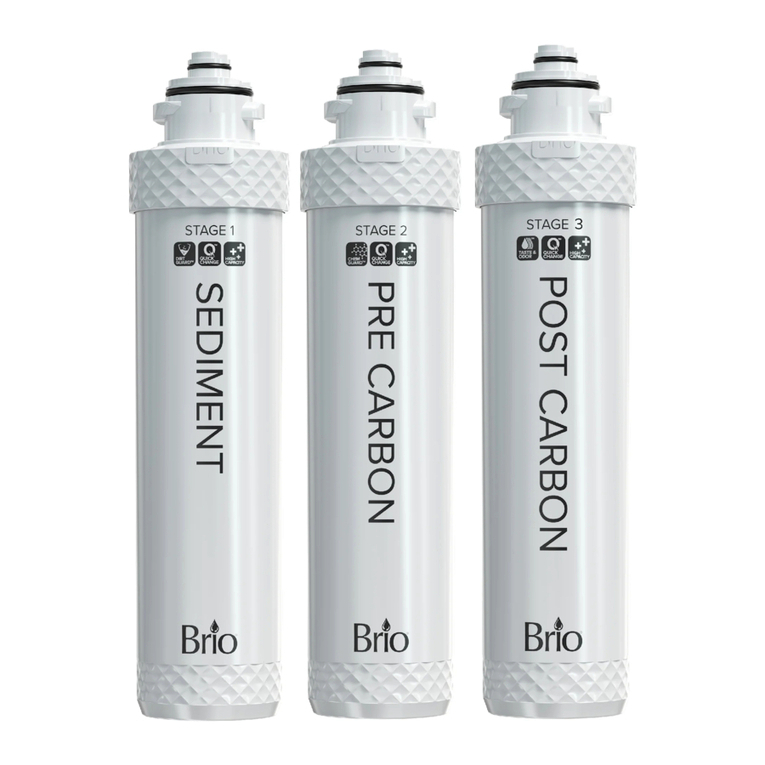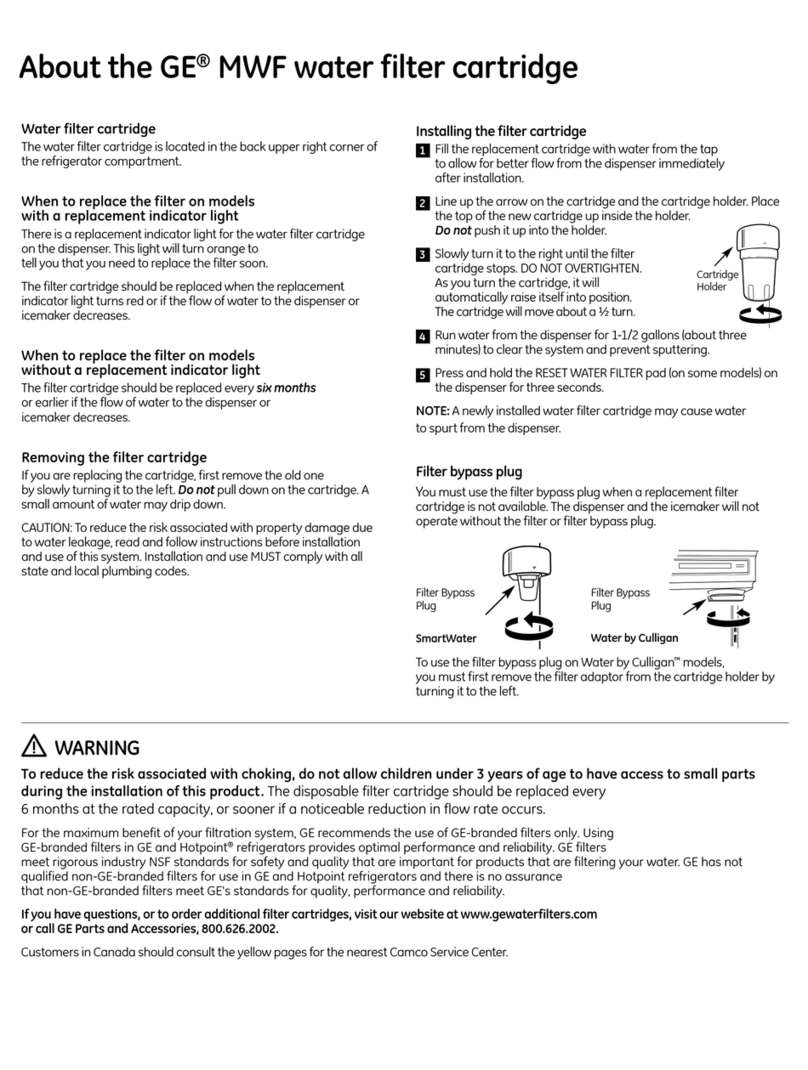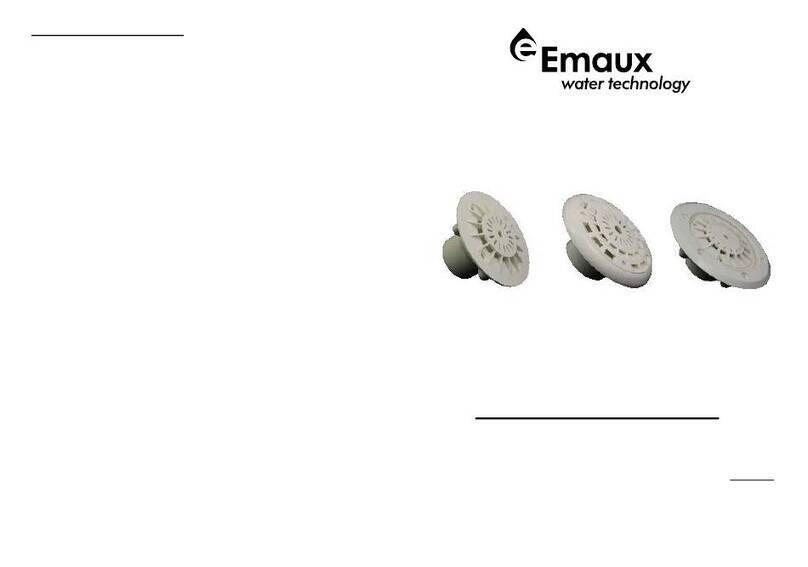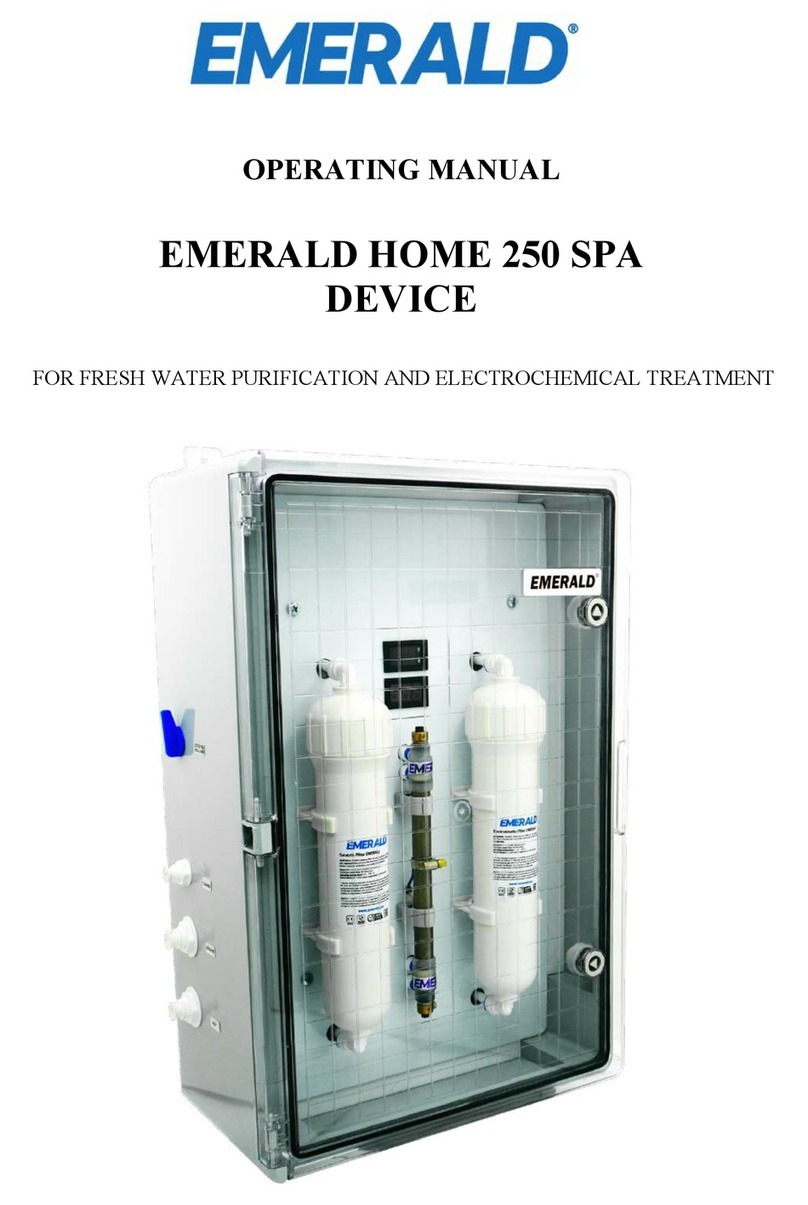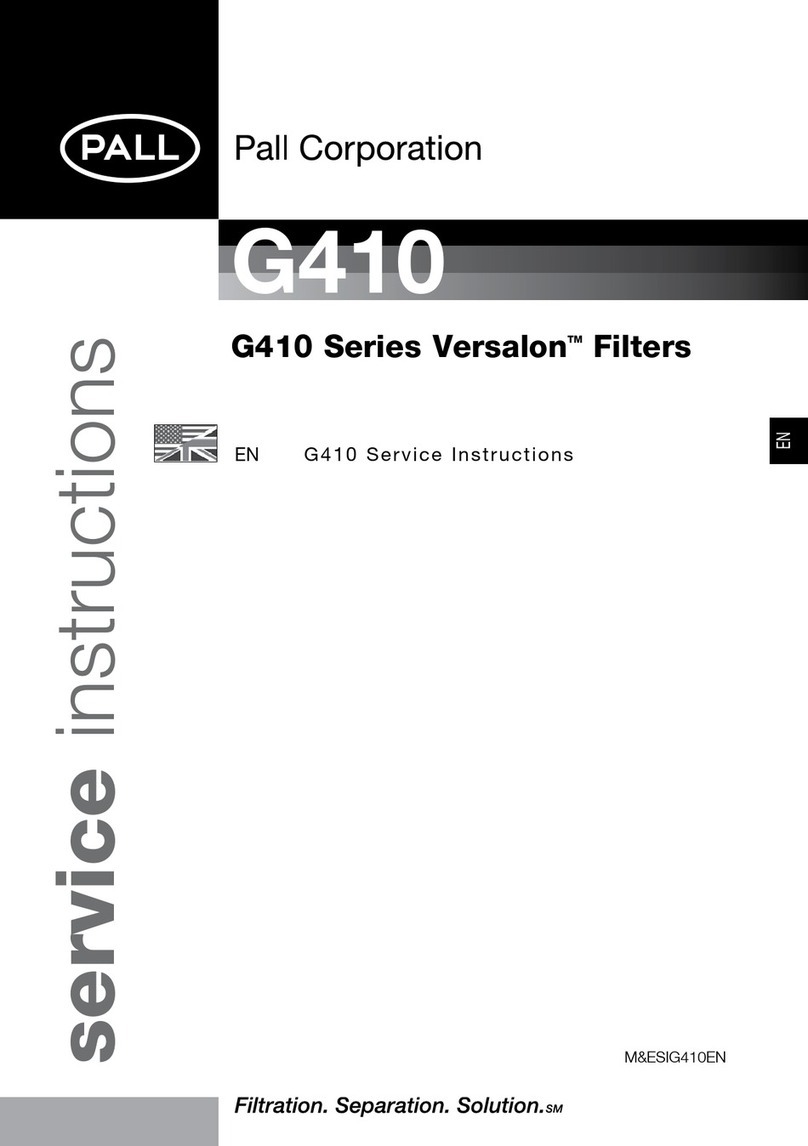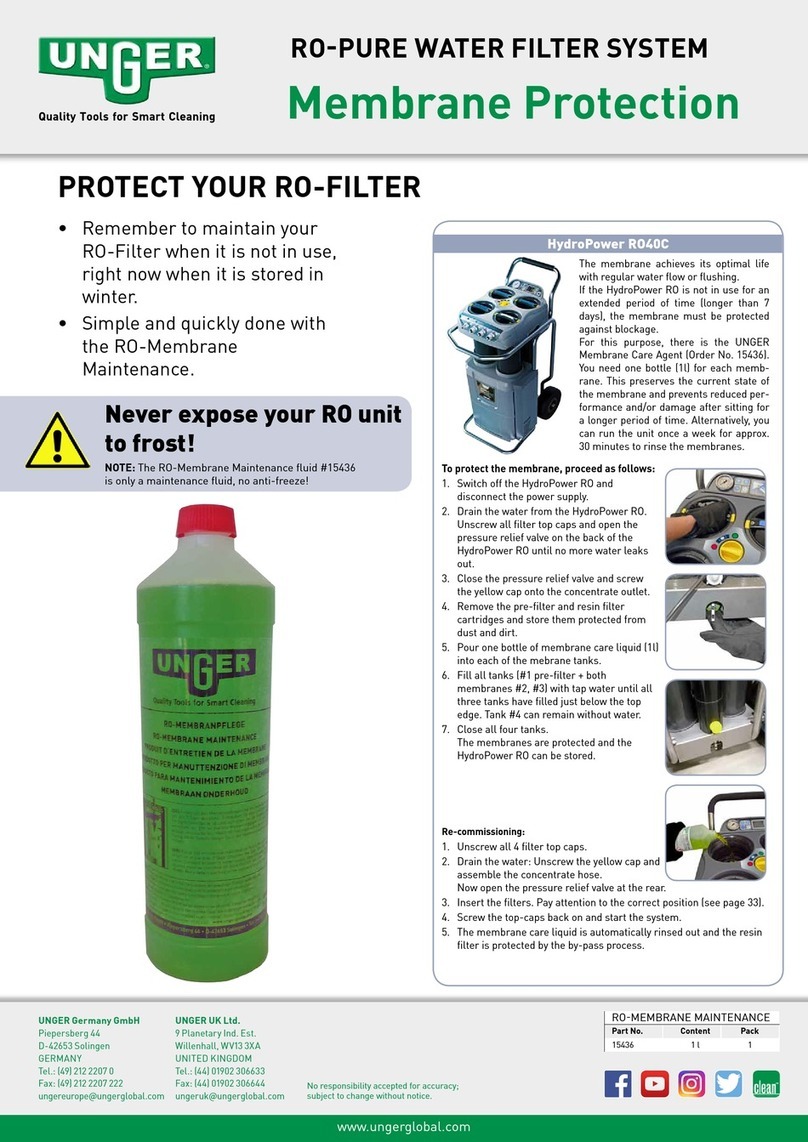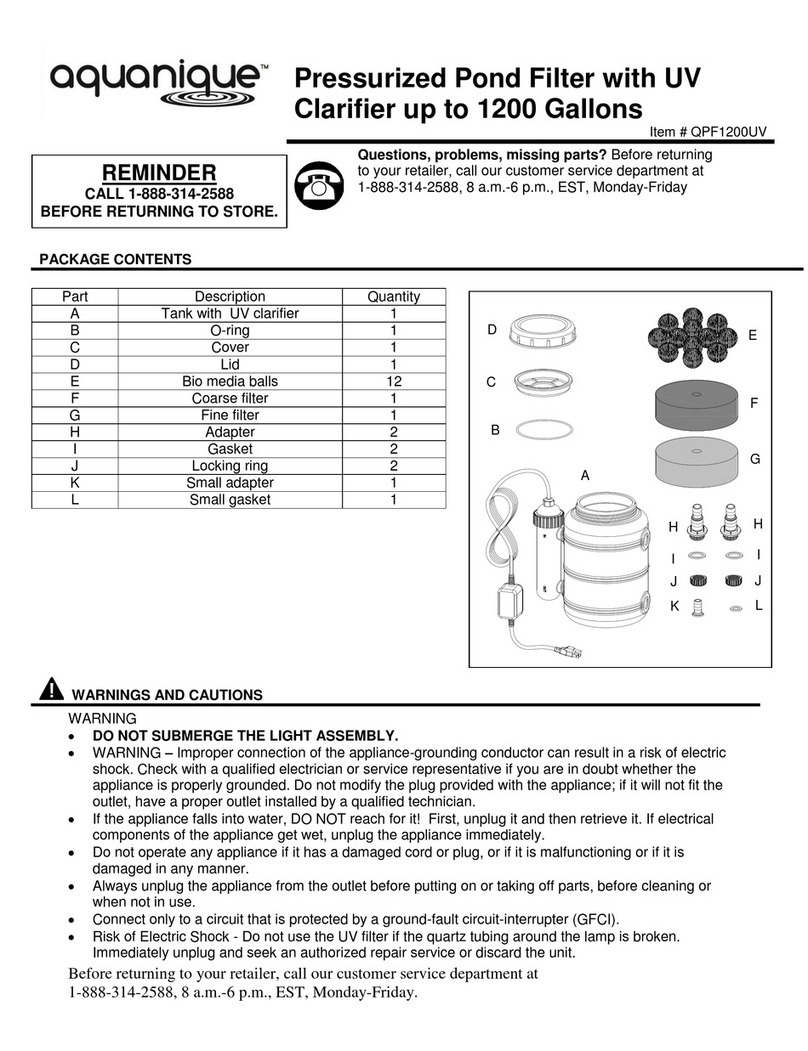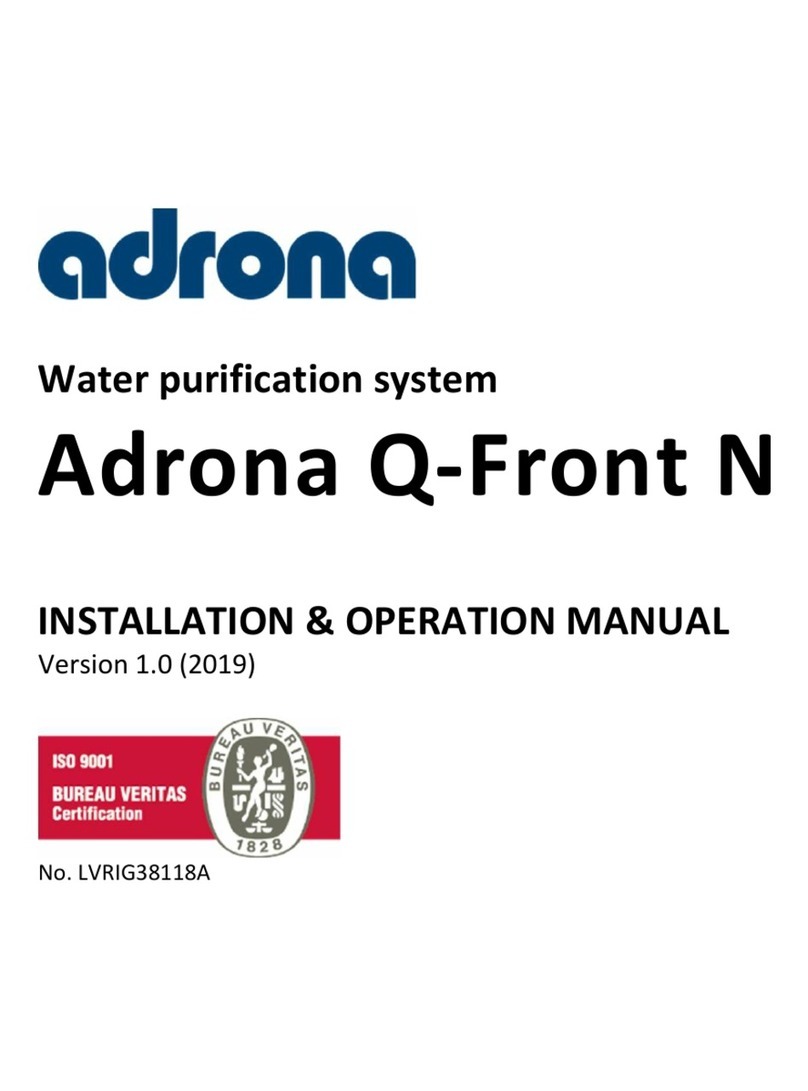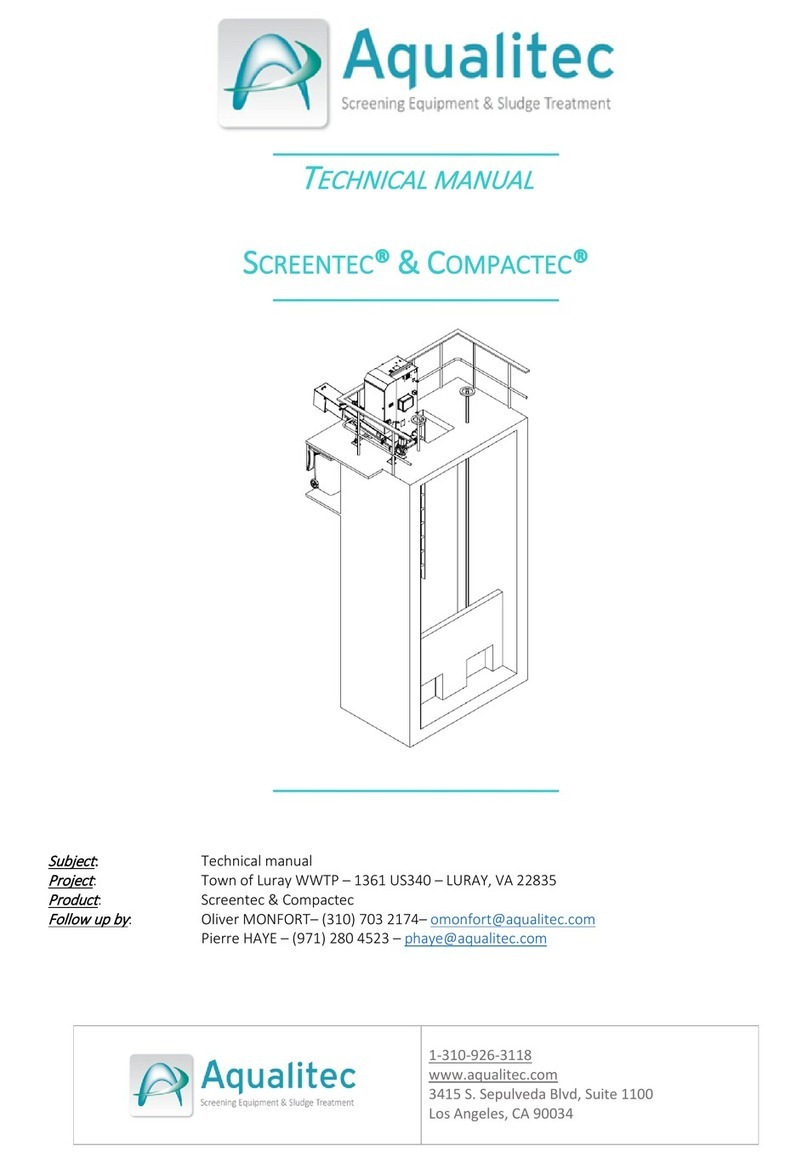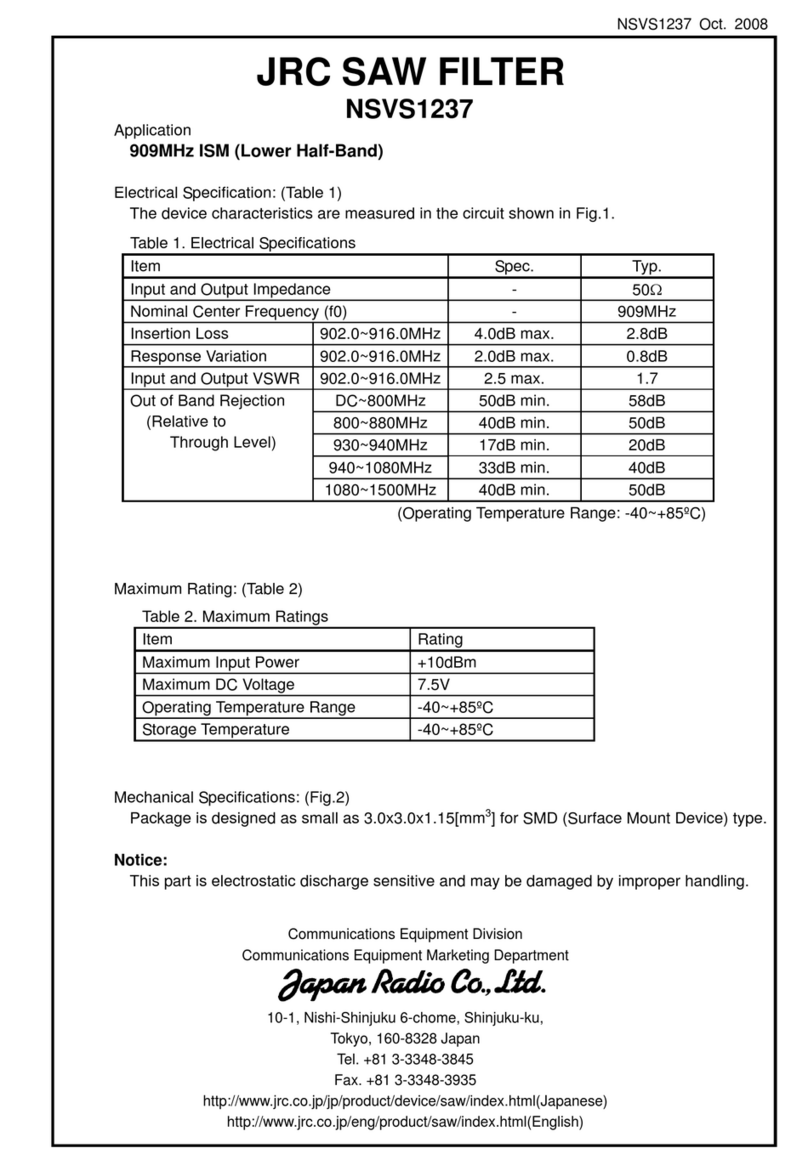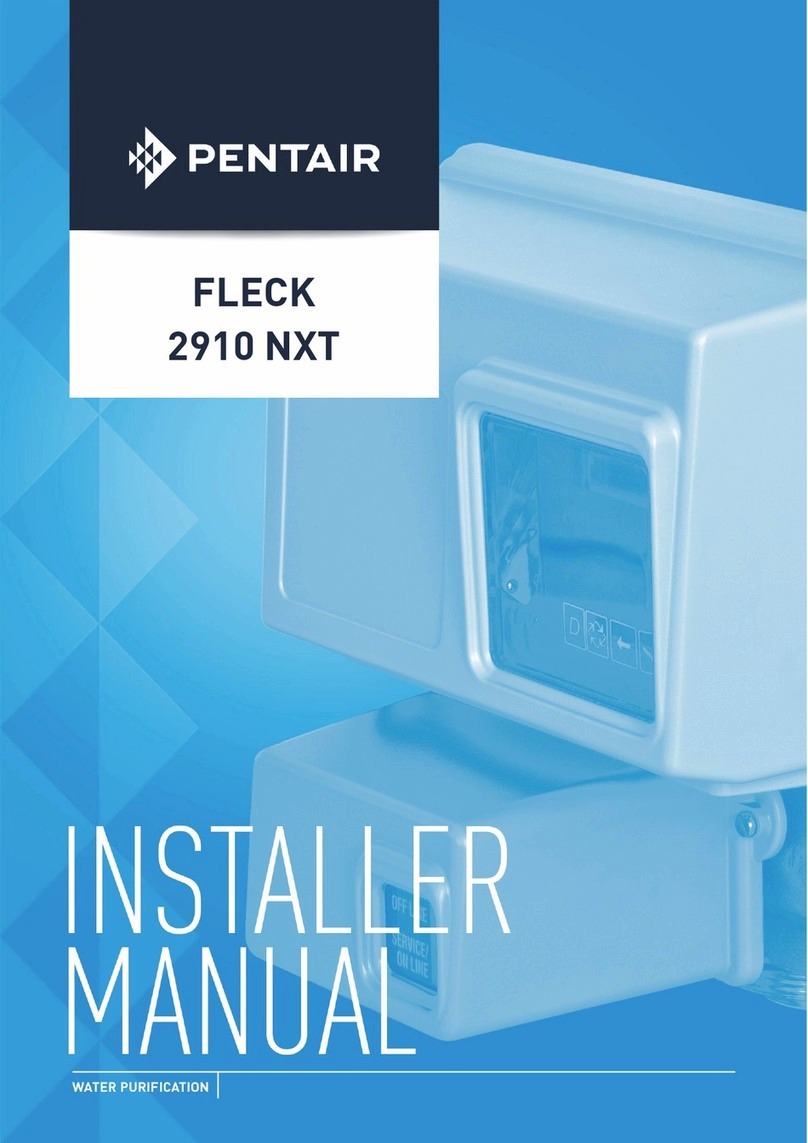Titus FFD User manual

Redefine your comfort zone. ™ | www.titus-hvac.com
Fan Filter Unit
FFD / FFDR / FFDRA
INSTALLATION &
OPERATION MANUAL

2IOM - FFD Redefine your comfort zone. ™ | www.titus-hvac.com
IOM
FFD / FFDR / FFDRA
Table of Contents
Critical Operations of the Fan Filter Unit .......................................................................... ......................................3
Warnings ................................................................................................................................. ................................3
Installation............................................................................................................................. ...................................4
ON/OFF Switch - Speed/Airflow Adjustment ................................................................... ......................................5
Troubleshooting................................................................................................................. .......................................7
Pre-filter Cleaning (foam) .................................................................................................. ......................................8
Service: Removal and Replacement of FFD Filters............................................................. .....................................9
Service: Removal and Replacement of Roomside Replaceable Filters ............................ ....................................10
Service: FFD and FFDR Motor Removal and Installation ......................................................................................11
Service: FFDRA Motor Removal and Installation ..................................................................................................12
Unit Wiring Diagrams ............................................................................................................................................13
Unit Replacement Parts List ..................................................................................................................................14
Drawing - FFD Filter .......................................................................................................... .....................................15
Drawing - FFDR & FFDRAFilter ......................................................................................... .....................................16
Testing.....................................................................................................................................................................17

3
IOM - FFD
Redefine your comfort zone. ™ | www.titus-hvac.com
Critical Operation Conditions of FFD, FFDR, & FFDRA models
1. Touching of the HEPA filter will damage it, voiding the warranty
on the filter. The screen is only to protect against an accidental
‘touch’ of the filter. Never place a hand or tool on the filter. Never
lie filter face flat down on a surface always have filter on its side
to protect from damage.
2. Prior to powering the unit, verify voltage on label and that the unit
has been wired into the correct voltage. The serial number label on
the top of the unit has the required voltage.
3. To insure you order the proper replacement parts or complete
unit, record the part number and serial number. This information
is located on the serial number label, located adjacent to the
electrical box. If you can’t locate the Sales Order Number, please
contact Titus for this information. Once obtained, record the
information for reference.
WARNING
TO REDUCE THE RISK OF FIRE, ELECTRICAL SHOCK, OR INJURY TO
PERSONS, OBSERVE THE FOLLOWING:
A. Installation work and electrical wiring must be done by qualified
person(s) in accordance with all applicable codes and standards,
including fire-rated construction.
B. When cutting or drilling into wall or ceiling, do not damage
electrical wiring and other hidden utilities.
C. If this unit is to be installed over an area using liquid, such as water
or chemical cleaning solutions, it must be marked as appropriate
for the application.
D. Use this unit only in the manner intended by the manufacturer. If
you have any questions, contact the manufacturer.
E. Before servicing or cleaning the unit, switch power off at unit
service panel and lock service panel to prevent power from being
switched on accidentally.

4IOM - FFD Redefine your comfort zone. ™ | www.titus-hvac.com
IOM
FFD / FFDR / FFDRA
Step 3. Raise the unit and secure it into place using the chosen support
system method suspended from a structural support bracing.
Step 4. Have an electrician wire the unit to the appropriate voltage,
according to the wiring diagram (page 13), and all national and local
electrical codes. All units are equipped with a three position terminal block
for field onnection. Verify correct singlephase power, before energizing
units.
Step 5. Turn on the power using the two position rocker switch (ON/OFF)
located on the electrical box. For FFDR and FFDRA units, let the unit run for
a few hours to purge off particulate (if filters are shipped loose) that may
be adhered to the inside of the unit before installing the filters. Do not run
fan at full speed as this may cause overload condition.
Note: Your fan filter may have been shipped separate. Controls have been
shipped separately.
Installation
Note: Titus fan filter units are completely assembled at the factory with
the exception of the optional ¼”-20 eyebolts that are used when hanging
the unit from an engineered design support system and installation of the
HEPA/ULPA filters (eyebolts not included and can be ordered separately,
p/n 222449-001).
Step 1. Carefully remove the unit from the shipping carton and inspect for
any damage that may have occurred during transportation (See Figure 1).
Note: When ordering FFDR and FFDRA units, the HEPA filters may
be shipped separately to be installed into units after the fan box has
been installed.
Step 2. If using rigidly supported grid (usually 2” (50 mm) or wider), raise
unit through ceiling and lower onto the gasketed grid. If using a flexible
grid (typically supported with wires), the unit must be secured to an
engineered design support system with s-hooks and chain. Screw the
four eyebolts into the nutserts on the lid assembly before lifting into an
overhead position (see Figure 2)
Note: Confirm fan dimensions to match T-grid dimensions.
Figure 1: Unboxing
Figure 2: Hanger Supports
EYEBOLT
FAN FILTER
UNIT

5
IOM - FFD
Redefine your comfort zone. ™ | www.titus-hvac.com
Unit Control Box
ON/OFF SWITCH - SPEED/AIRFLOW ADJUSTMENT
All units are equipped with a speed control enabling adjustment of airflow at any setting within the recommended performance range. The speed
control knob is located on the side of the electrical box, adjacent to the on/off switch.
SPEED CONTROL ADJUSTMENT
Airflow/speed is adjusted by rotating the knob (See figure above):
•Clockwise Lowers the speed
•Counter-Clockwise Increases the speed
Fully rotating the speed control knob to the left or counter-clockwise will turn the unit off.
Note: When turning the unit “ON” from the “OFF” position of the speed control, the fan is at the highest speed. Turning the speed control knob
clockwise will lower the airflow.
OPTIONAL SPEED CONTROL
For units equipped with a three-position rotary switch, it is located on the side of the electrical box (See figure below). Recommended fan speed
during initial start-up and operation is the “LOW” speed. As airflow eventually decreases due to filter loading, fan speed may be increased by moving
the rocker switch to the top or “MEDIUM” position, and finally to the “HIGH” position. Periodic airflow velocity readings (per IEST Reccommended
Practices) should be conducted to determine the filter condition and appropriate fan speed setting.
ON/OFF SwitchElectrical EntranceSpeed Control
ON/OFF SwitchElectrical Entrance3-Speed Switch

6IOM - FFD Redefine your comfort zone. ™ | www.titus-hvac.com
IOM
FFD / FFDR / FFDRA
Filter Indicator Light option
The pressure switch for the filter indicator light option is set at 0.60 in wc
from the factory. The set point for the pressure switch can be adjusted
between 0.50 in wc and 3.00 in wc by turning the set screw, accessible for
the front of the control enclosure. Counterclockwise rotation will increase
the set point differential for switching; clockwise rotation will reduce the
set point.
The process to adjust this for a specific application is detailed below:
Step 1. Adjust fan speed to highest setting
Step 2. Measure and note initial pressure differential between ceiling
plenum and unit plenum (downstream of the fan & upstream of the filter)
Step 3. Restrict discharge airflow incrementally to increase differential
pressure until measured value matches filter loading requirements for
the project
a. If no specific filter loading requirements are specified a general
recommendation is to use twice the pressure differential
measured in step 2
Step 4. With the unit discharge blocked, adjust the set point of the
pressure switch
a. If the indicator light is illuminated, increase the set point of the
pressure switch (CCW rotation) until the is unilluminated
i. Slowly decrease set point until light illuminates
b. If the indicator light is unilluminated, slowly decrease the set point
of the pressure switch (CW rotation) until the light illuminates
Step 5. Remove obstruction(s) from the unit discharge
Step 6. Adjust fan speed to operational set point
ON/OFF SwitchElectrical KockoutSpeed Control
Filter Indicator Light
Pressure Switch Adjuster

7
IOM - FFD
Redefine your comfort zone. ™ | www.titus-hvac.com
Troubleshooting
LOW AIR VELOCITY:
Step 1. Adjust variable speed control for higher blower output. For
units equiped with 3-speed, adjust switch setting from “LOW” to
“MEDIUM” to “HIGH”.
Step 2. Check prefilter media; replace or clean as necessary.
Step 3. Check incoming power supply for proper voltage (120,208-
240,277/24).
Step 4. Examine the HEPA/ULPA filter.
HIGH AIR VELOCITY:
Step 1. Adjust variable speed control for lower blower output. For units
eqquped with 3-speed, adjust switch setting from “HIGH” to “MEDIUM”
to “LOW”.
FILTER ISSUES:
Non-Laminar Flow and/or Excessive Contamination:
Step 1. Insure that no large obstructions are upstream of airflow pattern.
Step 2. Determine that no other air-moving devices are operating in or
around clean room which disrupt room’s airflow pattern.
Step 3. Check air velocity and if low, conduct the “Low Air Velocity”
procedure outlined above.
Step 4. Conduct smoke and photometer test on HEPA/ULPA filter. Seal or
replace HEPA filter as necessary.

8IOM - FFD Redefine your comfort zone. ™ | www.titus-hvac.com
IOM
FFD / FFDR / FFDRA
Cleaning the Pre-filter (foam)
Tools Required: None.
Note: To keep the filter in top operating condition, washing the foam
prefilter is recommended every three to six months.
Step 1. To gain access to the prefilter, remove the ceiling panel next to the
unit, if applicable.
Step 2. Switch the ON-OFF switch to the off position.
Step 3. Remove the 16”x23” prefilter from the snap-in frame. (See
figure below)
Step 4. Clean the prefilter by hand washing in water with a mild
detergent or by using a vacuum cleaner. Allow prefilter to dry completely
before replacing.
Step 5. Reassemble by reversing the above steps.
WARNING
DISCONNECT THE UNIT FROM THE ELECTRICAL
POWER SOURCE BEFORE ATTEMPTING
ANY SERVICE
PREFILTER SURFACE ON TOP SIDE
SUPPORT SCREEN ON BOTTOM SIDE
ON/OFF SWITCH

9
IOM - FFD
Redefine your comfort zone. ™ | www.titus-hvac.com
Service: Removal and Replacement of FFD HEPA/ULPA Filters
WARNING
DISCONNECT THE UNIT FROM THE ELECTRICAL
POWER SOURCE BEFORE ATTEMPTING
ANY SERVICE
WARNING
THE STANDARD FILTER IS PROTECTED WITH AN
EXTENDED METAL FACE SCEEN. THIS IS NEVER TO
BE USED TO HANDLE THE FILTER. IT IS ONLY FOR
PROTECTION AGAINST AN ACCIDENTAL TOUCH OF THE
FILTER. ONLY HANDLE THE FILTER BY THE FRAME
Note: All filters should be visually inspected for freight damage before
installation. It is necessary to use two workers when removing the filter
and for installation to avoid twisting or separation of the media seals.
Handle the filter only by the frame and never place anything on the
upstream filter side of the filter. Additionally, it is important to keep the
filter level to prevent any shearing force on the media itself.
FOR STANDARD FILTERS:
Tools Required: Phillips Head Driver, Battery Operated Drill with 5/32 drill
bit, Rivet Hand Tool, Ø5/32 aluminum rivet grip range.126-.187
Step 1. Remove unit from ceiling.
Step 2. Remove the 10 screws holding the HEPA/ULPA filter to the
lid assembly.
Step 3. Lift the lid assembly off the HEPA/ULPA filter (see figure). Remove
filter deflectors using 5/32 drill bit. Keep filter deflectors to install in
new filter. Discard the used filter as per requirements of the applicable
regulations. Carefully install the filter deflectors into the new filter using
the 5/32 rivets. Do not touch or place the filter deflectors on the HEPA/
ULPA media pack. This could cause tears in the filter pack.
Step 4. Before replacing with the new filter, carefully inspect the new
filter for any visible damage. Also inspect the gasket and the T-Bar to
insure a tight seal. Replace if necessary.
Step 5. To replace a filter, raise the filter and rotate into position in
the ceiling grid (with power off), then lower the plenum housing into
place. Reconnect wiring and hardware from previous steps that have
been removed.
Step 6. Restore power and verify proper operation of FFU.
Standard Filter Change
On/Off Switch
Lid Assembly
#8 Screws (10x)
Ø5/32 Rivet (6x)
HEPA/ULPA Filter
Filter Deflector
Electrical Knock Out

10 IOM - FFD Redefine your comfort zone. ™ | www.titus-hvac.com
IOM
FFD / FFDR / FFDRA
Service: Removal and Replacement of FFDR & FFDRA Filters
WARNING
DISCONNECT THE UNIT FROM THE ELECTRICAL POWER SOURCE BEFORE ATTEMPTING ANY SERVICE
WARNING
THE STANDARD FILTER IS PROTECTED WITH AN
EXTENDED METAL FACE SCEEN. THIS IS NEVER TO
BE USED TO HANDLE THE FILTER. IT IS ONLY FOR
PROTECTION AGAINST AN ACCIDENTAL TOUCH OF THE
FILTER. ONLY HANDLE THE FILTER BY THE FRAME
Note: All filters should be visually inspected for freight damage before
installation. It is necessary to use two workers when removing the filter
and for installation to avoid twisting or separation of the media seals.
Handle the filter only by the frame and never place anything on the
upstream filter side of the filter. Additionally, it is important to keep the
filter level to prevent any shearing force on the media itself.
FOR FFDR & FFDRA FILTERS:
Tools Required: Phillips Head Driver, Battery Operated Drill, 3/16” hex head
ball driver (2ea)
Step 1. With the power off, remove the diffuser screen by removing the 6
each 10-32x1/2 screws, then carefully place in a safe location.
Step 2. Loosen the six 1/4x12 socket head screws far enough to rotate
the eight filter clips 90°. The filter may be loose enough to drop during
this operation. If not, slowly pull the filter away from the knife-edge seal,
taking care not to touch the filter face during this operation. It is important
to pull the filter slowly away from the seal, so that the gel remains in the
filter gel track.
Step 3. Carefully clean plenum assembly knife edge surface of residual
gel material.
Step 4. Inspect filter for visible damage, if damaged set aside for
replacement or repair.
Step 5. Inspect the gel seal, if reinstalling the removed filter. Determine
if the gel has lost its ability to seal (i.e. the gel should reform to cover the
track without voids or openings), if so repair the gel material or consider
replacement of filter.
Step 6. Place the filter evenly against the filter-sealing surface of the unit.
Reposition filter clips and screws. The clips should be rotated and angled
into place. It is recommended that four workers work on each corner of the
filter simultaneously, holding the filter seated into the track. Hand tighten
clips from opposite corners evenly until all clamps are tightened.
Step 7. Reinstall diffuser screen by hand-tightening the screws.
FFDR & FFDRA Filter Change
Fan Filter Unit
Filter
2-Piece Welded
Plenum Housing
Filter Clip and
Screw (typ 6)
Diffuser Screen
Screws (typ 6)
FFDR & FFDRA Filter Replacement
Filter
Filter Clip
Gel Track
Knife- Edge
Seal
Diffuser
Screen
10-32
PHP
Screws
¼ -20
Cap
Screw

11
IOM - FFD
Redefine your comfort zone. ™ | www.titus-hvac.com
Service: FFD and FFDR Motor Removal and Installation
Tools Required: Phillips Head Driver, Battery Operated Drill, (2) 8”
adjustable wrenches, 10 mm hex head wrench, #2 screwdriver, and slip
joint pliers.
Step 1. To gain access to the motor, remove the ceiling panel next to the
unit, if applicable.
Step 2. Switch the ON-OFF switch to the off position.
Step 3. Loosen the electrical box cover screws (2), and slide/lift off cover.
Step 4. Make note of all wire routing and locations for later reinstallation.
Step 5. Disconnect the two brown wires from the capacitor, using a pair
of pliers. Disconnect the motor wiring from the rotary switch and rocker
switch or speed control and rocker switch and remove the grommet from
the motor leads. Save this grommet for reinstallation.
Step 6. Remove the eight mounting screws to free the motor/blower
assembly from the lid assembly. If using power drivers, set the unit to a
low torque setting to avoid stripping the sheet metal screws. Carefully
remove housing assembly, paying attention to wire routing.
Step 7. Using an adjustable wrench loosen the two set screws that attach
the blower wheel to the motor shaft.
Step 8. Mark the location of the motor support bracket (belly band), then
loosen the bolt just enough to allow the motor support bracket to slid off
the motor.
Step 9. Using the removed motor, mark the new motor with the location
of the motor support bracket.
Step 10. Replace with the new motor and reassemble by reversing the
above steps 1-8. Set the spacing at 0.25” (6.35 mm)
WARNING
DISCONNECT THE UNIT FROM THE ELECTRICAL
POWER SOURCE BEFORE ATTEMPTING
ANY SERVICE
WARNING
ELECTRICAL SERVICE SHOULD ONLY BE PERFORMED
BY A LICENSED OR QUALIFIED ELECTRICIAN
Motor/Electrical Removal
Prefilter
Motor
Venturi Ring
Blower Wheel
ON/OFF Switch
Power Entrance

12 IOM - FFD Redefine your comfort zone. ™ | www.titus-hvac.com
IOM
FFD / FFDR / FFDRA
Motor/Electrical Removal
Plenum
Electrical connectors
located in inner
prefilter wall
Motor/Blower
Assy
Baffle Assembly
Gel Seal Filter
Screen
Motor Assembly
Blower
Wheel
Wellnut
Venturi
Ring
Motor
Machine Screw
and washer
Grommet
Service: Removal and Replacement of FFDR & FFDRA Filters
WARNING
DISCONNECT THE UNIT FROM THE ELECTRICAL
POWER SOURCE BEFORE ATTEMPTING
ANY SERVICE
WARNING
ELECTRICAL SERVICE SHOULD ONLY BE PERFORMED
BY A LICENSED OR QUALIFIED ELECTRICIAN
Note: Minimum 2 person project.
Tools Required: 3/16 Ball Driver, Phillips screw bit, Head Driver, Battery
Operated Drill, (2) 8” adjustable wrenches, 10 mm
hex head wrench, #2 standard screwdriver, and slip joint pliers.
Step 1. To gain access to the motor, remove the gel seal filter.
Step 2. Prior to removing motor/blower assembly, remove blower wheel
to expose motor connectors on motor. Using an adjustable wrench loosen
the two set screws that attach the blower wheel to the motor shaft.
Disconnect the two brown wires from the capacitor, using a pair of pliers.
Disconnect the motor wiring from the rotary switch and rocker switch or
speed control and rocker switch and remove the grommet from the motor
leads. Save this grommet for reinstallation.
Step 3. While supporting the motor blower assembly from below, remove
the six screws on the underside of the venturi ring and lower the assembly.
(See Figure 7). Note the baffle does not have to be removed to remove the
motor/blower assembly.
Step 4. Before removal of the motor mount bracket, measure the precise
location of the bracket on the motor. Remove the bracket.
Step 5. Replace with the new motor and reassemble by reversing the
above steps. Set the location of the motor mount bracket as measured.
Set the spacing at 0.25” (6.35 mm) clearance between the blower and
the upper motor plate/prefilter frame creating a 0. 1” (2.80 mm) overlap
between the wheel and the venturi ring. When reinstalling the assembly,
align the plate to insure that the leads will reach the electrical box.

13
IOM - FFD
Redefine your comfort zone. ™ | www.titus-hvac.com
Wiring Diagrams
Pressure Monitor Switch)
Three Speed Wiring Diagram
Speed Control Wiring Diagram
Network Control Card Wiring Diagram

14 IOM - FFD Redefine your comfort zone. ™ | www.titus-hvac.com
IOM
FFD / FFDR / FFDRA
Replacement Parts List
Model Size/Voltage Description Part Number
FFD, FFDR
FFDRA
N/A Disconnect Switch 63739-002
N/A Pre-Filter (foam) 62981-001
N/A Deector-Filter 38532-001
N/A Gasket, Neop. 125x5 62968
N/A Grommet 5/8 Id 1 1/8 Od 63388
120V
Transformer 24V
63667
208V-240V 63666
277V 63665
120V
Speed Controller
63011
208V-240V 63015
277V 63016
230V Speed Controller (CE Marked) 63742
N/A Blower Wheel 63270
N/A Ventiri Ring 62964
120V
Network Control Card (FFD, FFDR, & FFDRA)
64083-001
208V-240V 64083-002
277V 64083-003
FFD, FFDR
120V
PSC Motor/Blower Assembly (FFD & FFDR)
24332-001
208V-240V 24332-002
277V 24332-003
FFDRA
120V
PSC Motor/FFDRA Blower Assembly (FFDRA)
24332-015
208V-240V 24332-016
277V 24332-017

15
IOM - FFD
Redefine your comfort zone. ™ | www.titus-hvac.com
FFD Filter Drawing

16 IOM - FFD Redefine your comfort zone. ™ | www.titus-hvac.com
IOM
FFD / FFDR / FFDRA
FFDR and FFDRA Filter Drawing

17
IOM - FFD
Redefine your comfort zone. ™ | www.titus-hvac.com
Testing
Recommend ed Testing – 8 readings with a Velgrid
Each fan filter unit is thoroughly tested at the factory before shipment.
However, because of the “rigors” of shipping, Titus encourages units are
re-tested after installation.
Titus recommends that the customer contact an independent organization,
with technicians trained and experienced in performance evaluation and
maintenance of clean air equipment.
HEPA filters (Type J) are tested to IEST-RP-00034. ULPA filters are tested to
(Type F) IEST-RP-00034. All filters are UL 900 recognized. Your filters may
have special requirements, please see original engineering specifications
for you specific project.
All units that are airflow tested at Titus are tested using a Shortridge
Airdata Multimeter 870 with a Velgrid head. The recommended method of
reading is to place one corner of the Velgrid head 1-1/4” from the corner of
the filter face and then take four reading evenly spaced along the four foot
side, then repeat these reads three additional times. This gives a total of 8
reading to test the unit. All advertised data is based on using the Velgrid
with 8 readings (128 velocity points). Titus recognized the using 8 reading
during a cleanroom start-up may be time consuming and recommends
using 4 Velgrid readings taken on each 2x2 filter section will approximate
the same as 8 readings.
Recommended Testing – 8 readings with a Velgrid
Additional independent testing on the Titus fan filter units show that using
one-2x4 or two-2x2 hoods simultaneously give airflow data (cfm) with 5
percent of a duct traverse using 10 diameters of straight duct upstream of
the fan intake.
Recommended Testing – 8 readings with a Velgrid

18 IOM - FFD Redefine your comfort zone. ™ | www.titus-hvac.com
IOM
FFD / FFDR / FFDRA
Notes

19
IOM - FFD
Redefine your comfort zone. ™ | www.titus-hvac.com
Notes

605 Shiloh Rd
Plano TX 75074
ofc: 972.212.4800
fax: 972.212.4884
Redefine your comfort zone. ™ | www.titus-hvac.com
This manual suits for next models
2
Table of contents
